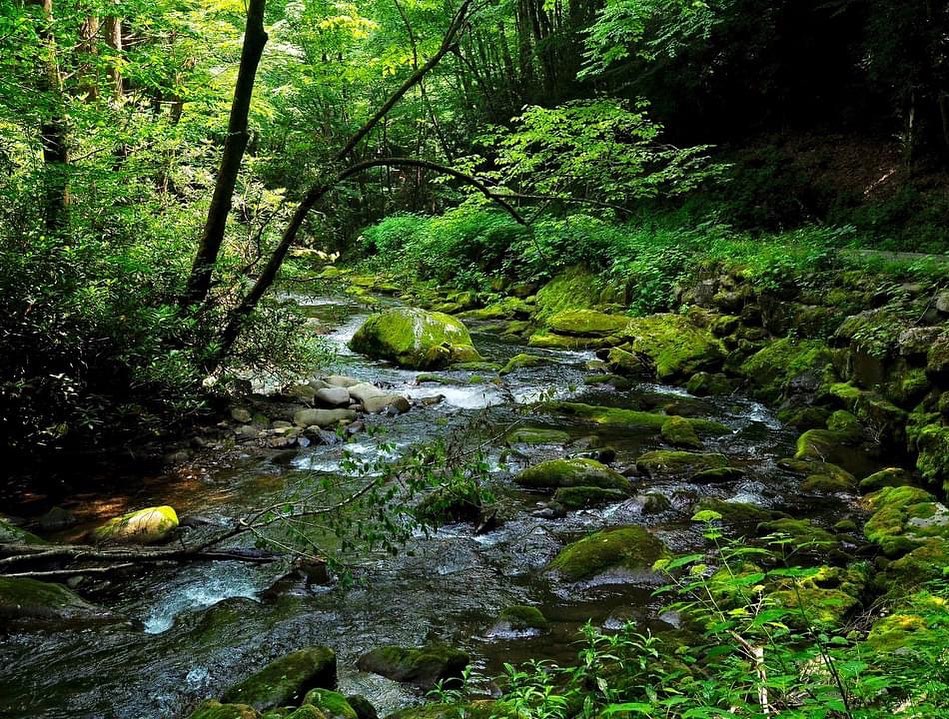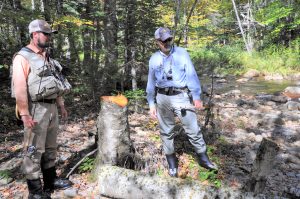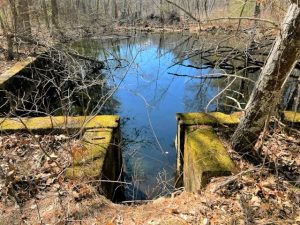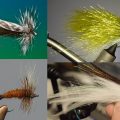Holistic Stream Restoration: A New Approach

Photo by J. Carrol Sain
Editor’s Note: This is the thirteenth article in our series on fly fishing conservation. This series appears with the support of Epic Fly Rods.
For years I’ve watched as agencies and organizations take down dams, build fish ladders and other forms of passage, replace or remove culverts and bridges, cut trees, plant trees, deposit in-stream structure including trees they cut, and rebuild stream banks. While the results are usually positive, it isn’t always positive. Some projects yield no discernable results and in some cases actually do more harm than good.
Some aquatic habitat work results in a measurable increase in wild native fish abundance. I’ve seen both the average and top-end size of wild native fish go up as well. Flat Creek in Jackson, Wyoming, comes to mind where this once cattle-beaten stream now boasts wild native fine-spotted cutthroat over 20 inches and in solid abundance. When done right and in the right place, habitat work works. Unfortunately this is not always the case.
One project on a Wild and Scenic River in a designated Wilderness Area in New Hampshire cut live streamside trees under the guise of what is called chop-and-drop, a method of creating in-stream structure. It destabilized some banks and reduced canopy allowing the sun to penetrate the streambed. The trees cut from the riparian area washed away and were deposited downstream and above the normal water mark by the first spring melt.
“When it comes to fish conservation, we’ve never really gotten it right. The emphasis has been too gamefish centric, too accepting of nonnatives, and too reliant on artificial propagation and other forms of husbandry. This is especially true in regard to trout.” –Bob Mallard, Executive Director, Native Fish Coalition

Cutting live trees from the riparian area is not good habitat work.
Some projects have opened up water to stocked fish that did not have access before. Others have been documented to increase previously established nonnative fish abundance, and at the expense of the less aggressive wild native fish. I’ve seen several sites that created unnatural concentrations of fish that are easily exploited by anglers and avian, mammalian, and reptilian predators.
One project resulted in a natural side channel being dewatered at certain flow levels, stranding juvenile fish including wild native brook trout. It also created a large pool that concentrates fish at the most accessible point in the stream for miles and within a stones throw of a popular backcountry campsite. The discarded worm containers, illegally used as the water is artificial lures only, proves that the unnatural concentration of fish is being exploited by anglers.
In a few cases I have seen habitat work done that had no measurable impact good or bad. Two projects on my home river, the Kennebec in Maine, are examples. In one case two large boulders were deposited in a side channel next to the road. In twenty years of fishing the river, I have yet to catch a fish there. The other was a pair of roadside rock-filled wooden cribwork deflectors that were made inoperable by the first spring melt.
Native Fish Coalition recently opposed a proposal to remove a small dam on state-owned land in New Hampshire. The sole objective was to educate the masses in regard to the importance of stream connectivity via a streamside kiosk on a popular paved recreational trail. The only fish that would pass through post-removal would be stocked brook trout and nonnative yellow perch, and into water they do not have access to today.

The proposed removal of this dam would allow stocked and nonnative fish access to water
they do not have access to today with no stated conservation goals.
Publicly funded aquatic habitat work is controlled by too few entities. Over time we have moved from project-centric funding to an agency/organization-centric model, where some entities get money just because of who they are and because they have done habitat work in the past. This is a dangerous trend as it removes an important check-and-balance: project-level planning, review and accountability.
While small groups like Native Fish Coalition struggle to find funding for habitat projects, other agencies and organizations have more money than they can effectively spend. While one group focusses their efforts on streams that are home to stocked or naturalized nonnative fish, another group can’t get the funding they need to do work on unstocked wild native trout waters. What is the conservation value in propping up stocked or nonnative fisheries?
I’ve always felt that there are times in conservation when we leap before we look. As a detail-driven person, I like to look before I leap. As the head of a nonprofit working with other people’s money, I have to do so. Anything less would be a disservice and dereliction of duty. I feel strongly that nonprofits should spend member, donor, and taxpayer money as if it were their own.
When it comes to habitat work, it hurts our cause when we do the right thing in the wrong place or the wrong thing in the right place. We need to do the right thing in the right place, and for the right reason. In addition to execution, we need to explain what we are doing, why we are doing it, and what folks can expect once it’s done. We also need to tell people what we did after the fact so they know what they are looking at, who did it, and why it was done.
A few months back, Marshall Cutchin, editor and publisher for MidCurrent, approached me with the idea of creating what he referred to as a “Holistic Stream Restoration” model. Recognizing the need, I jumped at the opportunity. I saw NFC as the perfect organization to do something like this due to our native-only and multi-species focus. Plus, NFC is new and young, and not burdened by long-standing practices or handcuffed by sacred cows.
With the help of MidCurrent, NFC is working to develop a methodology that brings a big picture holistic approach to stream restoration. All inclusive. Look before you leap. A top to bottom assessment of the watershed before taking any action. Full public disclosure of findings, issues and recommendations in regard to potential mitigation. And most importantly, only doing the right thing in the right place and for the right reason—the preservation of wild native fish.
“The protection of naturalized nonnative species should not be confused with conservation. If we truly want healthy, resilient, functioning aquatic ecosystems, we need to prioritize the preservation and restoration of wild native species and be willing to put fish ahead of fishing.” -Emily Bastian, National Chair, Native Fish Coalition

An instream structure of unknown age and unconfirmed purpose on Trout Brook.
After developing a general framework for Phase I, Assessment, NFC has chosen a target water for proof-of-concept. Rather than addressing low-hanging fruit with a high probability of success, we chose Trout Brook in Dover, Massachusetts, a historical wild native brook trout stream where at best the population is notably depressed and at worst extirpated. If we can figure out what is going on at Trout Brook we can figure out what is going on anywhere.
In addition to Massachusetts NFC, the group includes representation from National NFC Board and Advisory Council, as well as the Town of Dover, Charles River Watershed Association, and MassWildlife. Others will be brought in on as-needed basis.
The top-to-bottom assessment defined in Phase I of our methodology includes analyzing historical maps and records, water quality and fish stream surveys, and stocking data to establish a baseline and understand what was done when. Next is a virtual and physical examination of the watershed using Google Earth as well as volunteers on foot and in canoes.
Once we understand the lay of the land, the group will focus their efforts on trying to locate wild native brook trout and other species using citizen science angling, e-fishing, and eDNA sampling. MassWildlife has made the latter possible by agreeing to suspend stocking while we are assessing the stream. While the stream always had a wild brook trout population, it has been supplemented with a small number of stocked fish each year for decades.
In conjunction with efforts to identify what fish are present, the group will monitor stream temperature for a full season. Referred to in a 1997 Massachusetts Department of Environmental Protection study as the “coolest” stream in the Charles River watershed, and located in what was a spring-rich area, we need to see if the situation has changed and if so why. We will also do some pH and chemical testing to determine if either of these are negatively impacting the stream.
Only when we know what is going on in regard to water temperature and quality, pH, fish-passage, whether the wild native brook trout still persist, and if the stream is still capable of maintaining a wild native coldwater fishery will we make any recommendations in regard to possible mitigation. That’s what stream restoration needs to look like to reach its full potential, and to ensure that we are spending people’s money wisely. And that’s what NFC and others aim to do.











